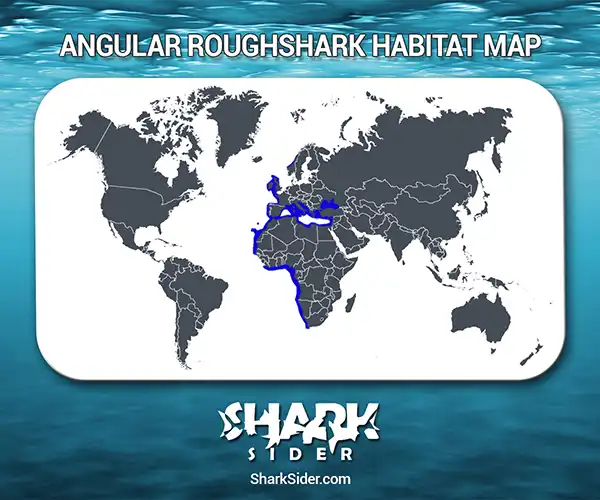It is obvious why the angular roughshark gets its name after taking one look at it. Due to its rounded snout and wide eyes, it has the appearance of a small pig.
Famed zoologist Carl Linneaus first described this shark in 1758.
Angular Roughshark Scientific Classification |
|
| Kingdom | Animalia |
| Phylum | Chordata |
| Class | Chondrichthyes |
| Order | Squaliformes |
| Family | Oxynotidae |
| Genus | Oxynotus |
| Scientific Name | O. centrina |
Description
The angular roughshark is generally 3.3 ft, but some reach lengths of 4.9 ft. The area around their eyes is very detailed – they have ridges that expand into large knobs. The ridges themselves are covered with denticles.
These sharks have a tight body, triangular cross-section, and a broad and flattened head. The snout is flat and blunt, with two relatively large, sail-like dorsal fins. Inside their mouth, they have 12 rows of teeth on both jaws – those on the upper part being lanceolate, while those on the lower jaw are more blade-like.
The primary way to distinguish this shark from other species in its genus is the light horizontal line below the eyes on their cheek. Their color scheme is grey or grey-brown dorsally with dark blotched marks on its head and sides.
Where do they live
Angular Roughshark Habitat Map

They are found throughout the eastern Atlantic Ocean, ranging from Norway to South Africa throughout the Mediterranean Sea. Some specimens have been spotted off the coast of Mozambique.
These sharks live in coralline algal and muddy bottoms on continental shelves and upper slopes. The depth at which they are found ranges from 160 to 2,170 ft, but they mostly stay below 330 ft.
Behavior
Dietary
Angular roughsharks feed on crustaceans, mollusks, and worms.
Social
These sharks are mostly solitary, though some occasionally form groups.
Reproductive
Female angular roughsharks are ovoviviparous, giving live birth to 7-12 pups, though certain sharks living in the Mediterranean have been recorded giving birth to 23 pups.
Adaptations
The blade-like teeth present in the lower jaw of these sharks help cut into their prey’s flesh.
Interactions with humans
They are sometimes caught as bycatch but have no commercial value. As a matter of fact, fishers consider this shark as an omen of ill luck and release it into the back most of the time.
However, this species doesn’t survive after being released by the anglers. As a result, the IUCN lists it as “Endangered” or “EN” because its population is declining due to constantly getting captured by mass fishing.
